Pickleball singles rules: A guide to the one-on-one match
Pickleball singles offers a unique and challenging experience for players, testing their skills and strategy in a one-on-one format. While singles play shares many rules with doubles, it has key distinctions that require players to adjust their strategy and technique. Understanding the specific pickleball singles rules will help you confidently navigate the court and make the most of this dynamic and rewarding format of pickleball.
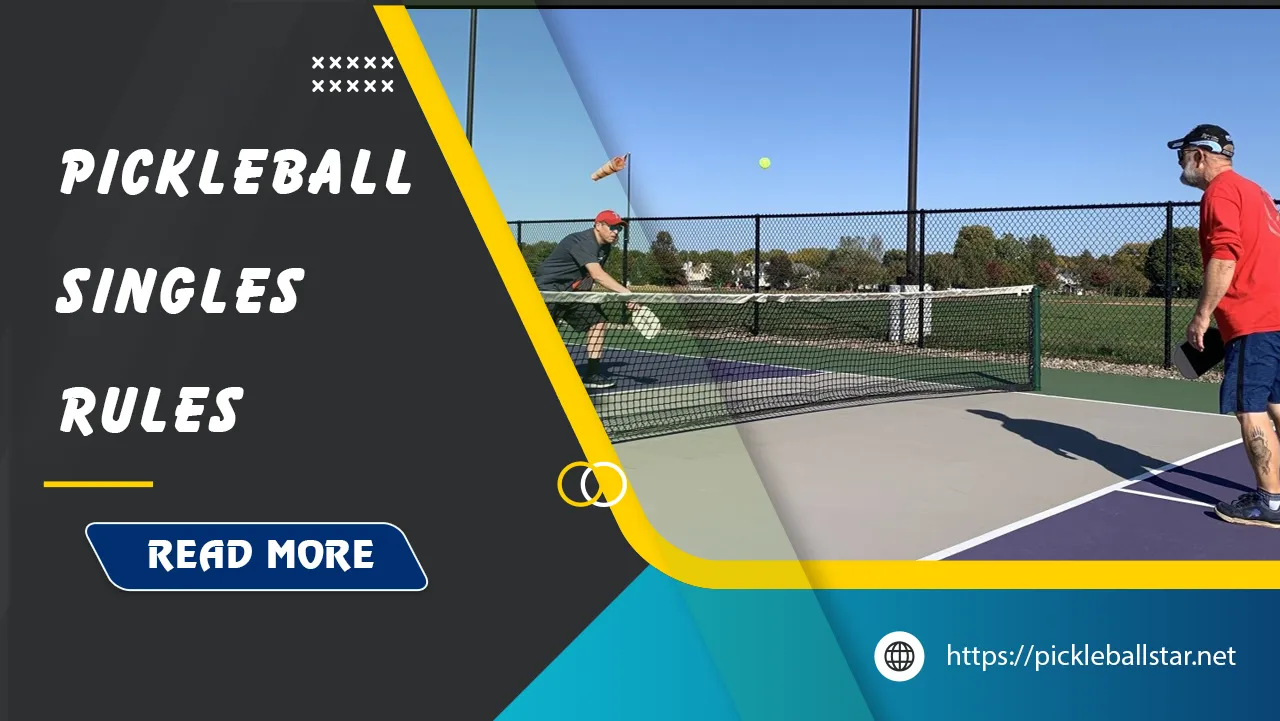
Court dimensions and setup
Court size
The first thing to grasp about pickleball is the court itself. Picture it as a condensed, high-octane arena compared to the sprawling tennis courts you might be used to. The standard pickleball court dimensions for singles play are 20 feet wide by 44 feet long, making it a more intimate and faster-paced setting. This smaller size necessitates rapid reflexes and acute precision shots, much like a condensed battlefield where every inch counts.
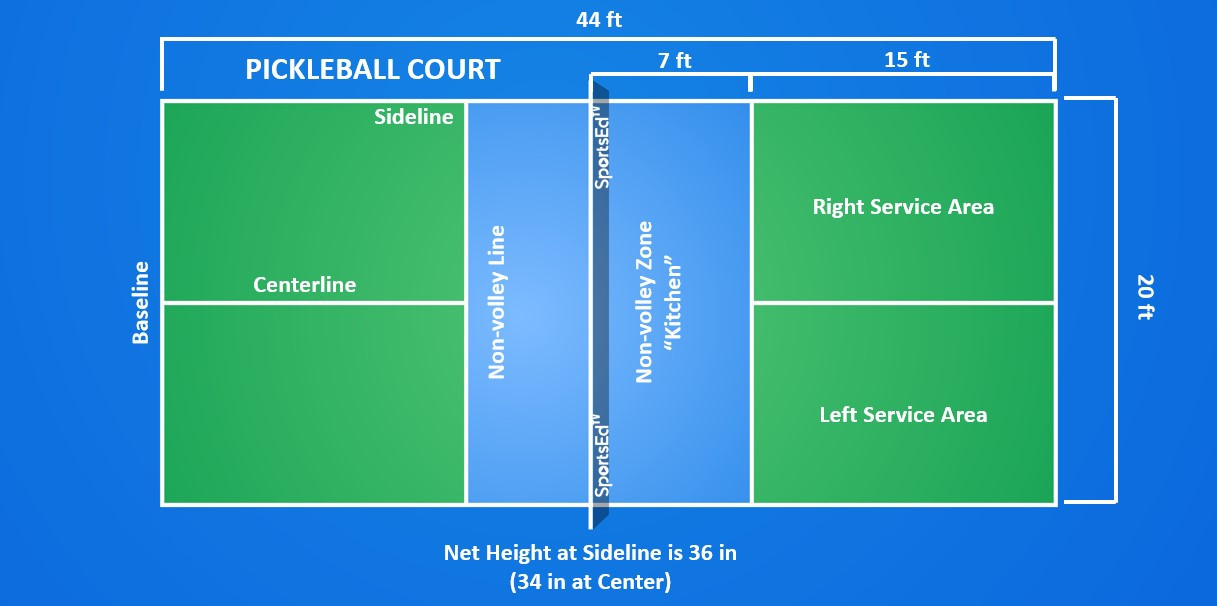
Crucially, the court is divided by a net that stands 36 inches high at the sidelines and 34 inches high at the center. This net doesn’t just serve as a dividing line, but a psychological obstacle, daring you to execute precise serves and volleys. Each half of the court is further segmented by a non-volley zone line (often called the “kitchen” line), which extends 7 feet from the net. This creates a strategic area that we’ll delve into more deeply shortly.
Non-volley zone (kitchen)
Now, let’s talk about the non-volley zone, or as it’s affectionately known, the “kitchen.” This area might as well be lava for all its importance in the game. The kitchen stretches 14 feet wide across both sides of the net and extends 7 feet from the net. You are not allowed to volley hit the ball before it bounces within this area. It’s a rule that ensures the game remains a test of skill rather than brute net-crashing.
Understanding the kitchen is essential for both offense and defense. Players must time their movements and shots carefully to avoid stepping into this forbidden zone while striking the ball mid-air. One misstep and you’ve given away a point a cruel but fair repercussion that keeps the intrigue levels high.
Serving rules
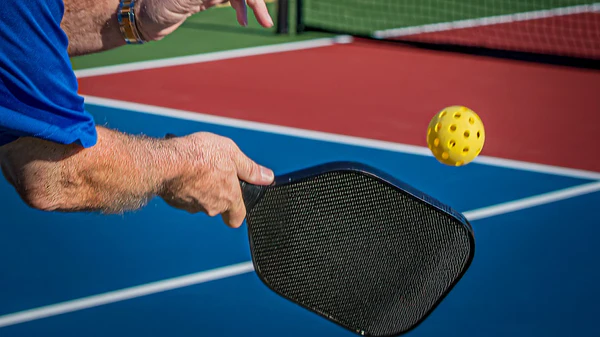
Serve technique
When it comes to serving, pickleball does not stray far from its tennis roots, yet it demands a finesse all its own. The serve in singles pickleball is underhand, and the server’s arm must move in an upward arc when striking the ball. Paddle contact with the ball must be made below waist level, and the head of the paddle must not be above the highest part of the wrist at contact. There’s also the option of a “drop serve,” an allowance that liberates you from these constraints completely.
Serve position
The tactical intricacies of serving extend to positioning. The initial serve always comes from the right side of the court (the even side). From there, the placement of the serve alternates based on your score when your score is even, you serve from the right; when odd, from the left. This requires quick mental math and strategic awareness, fostering a dynamic rhythm.
List of Serve Positions Based on Score:
- Even Scores (0, 2, 4, 6, 8, etc.): Serve from the right side.
- Odd Scores (1, 3, 5, 7, 9, etc.): Serve from the left side.
Serve direction
Serving is not merely a ceremonial start to the rally; it’s a strategic weapon. You must serve diagonally, aiming to land the ball beyond your opponent’s kitchen line. This diagonal serve forces your opponent to traverse the court, ideally exposing weaker areas in their defense. The serve must be placed shrewdly, mixing depth and spin to keep your opponent on their toes.
Scoring system
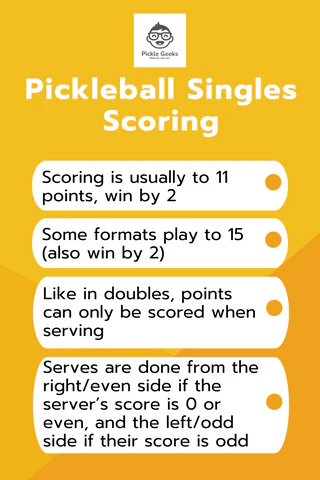
Scoring points
Scoring in pickleball singles follows the same principles as doubles but requires a keen grasp of momentum and opportunity. Unlike in tennis where both players can score on any serve, pickleball mandates that only the serving player can score points. Winning a rally on your serve earns you one point, continually ramping up both the pressure and stakes.
For example, if you’re the server and you win the rally, your score could go from 3 to 4. If you lose the rally, the serve simply switches to your opponent, and they have the chance to score.
Calling the score
Score calling might seem straightforward but, in the thick of the match, every number has a weight of its own. In singles, the score is called with just two numbers: the server’s score first and then the receiver’s. It’s like a verbal scoreboard that keeps both players aware and on edge.
For instance, if the server has 5 points and the receiver has 3, you would call “5-3” before proceeding with the serve. This simple yet effective system cuts through any potential confusion and keeps the focus on the rally ahead.
Winning a game
Victory in pickleball singles doesn’t come easy. Standard games are played to 11 points, but here’s the twist: you must win by a margin of at least 2 points. This “win by 2” rule ensures that each game has a competitive and thrilling end, where even a small lapse in concentration can tip the scales. Some tournaments may extend this to 15 or even 21 points, adding another layer of endurance and strategy.
Faults and penalties
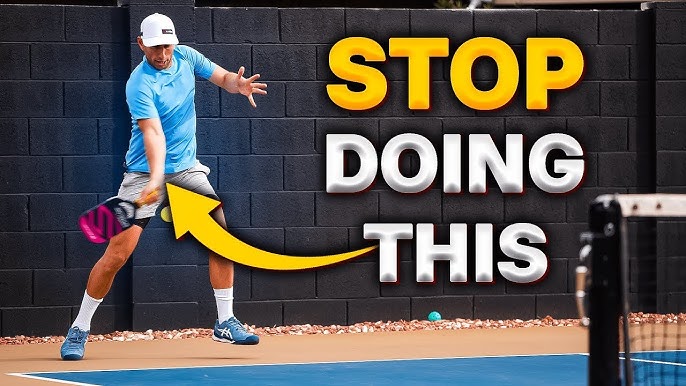
Foot faults
Foot faults in pickleball are the landmines waiting to trip you up. If you step on or over the designated lines of the court while serving, you’ve committed a foot fault. This infringement results in an immediate loss of the point an unforgiving penalty but one that enforces discipline.
Visualize a moment where you’re inching closer to the line to get that perfect strike, and oops, your toe clips the boundary. That’s it; point gone. It’s a meticulous rule designed to keep the game fair and square.
Summary of Foot Fault Rules:
- Stepping on/over the baseline while serving.
- Stepping in the non-volley zone while volleying.
Paddle faults
Paddle faults encompass a variety of missteps, from double hits to illegal serves. For instance, if your paddle hits the ball more than once in a single motion, it’s considered a fault, automatically awarding the point to your opponent. This ensures that each shot is deliberate and controlled.
Double hits
Double hits are particularly tricky. In the heat of a rally, the ball might accidentally strike your paddle twice before it bounces. That’s a clear fault, gifting your opponent the point. It’s a display of the game’s rigorous standards and necessitates precision and dexterity.
Volleying in the non-volley zone
Finally, beware of the non-volley zone. Volleys initiated inside this zone are automatically considered faults. If you step into this 14-foot wide perilous zone and volley, it’s not just a mistake it’s a rule violation. This pivotal rule keeps the game balanced, emphasizing tactical groundstrokes and rally strategies over aggressive net play.
Strategy
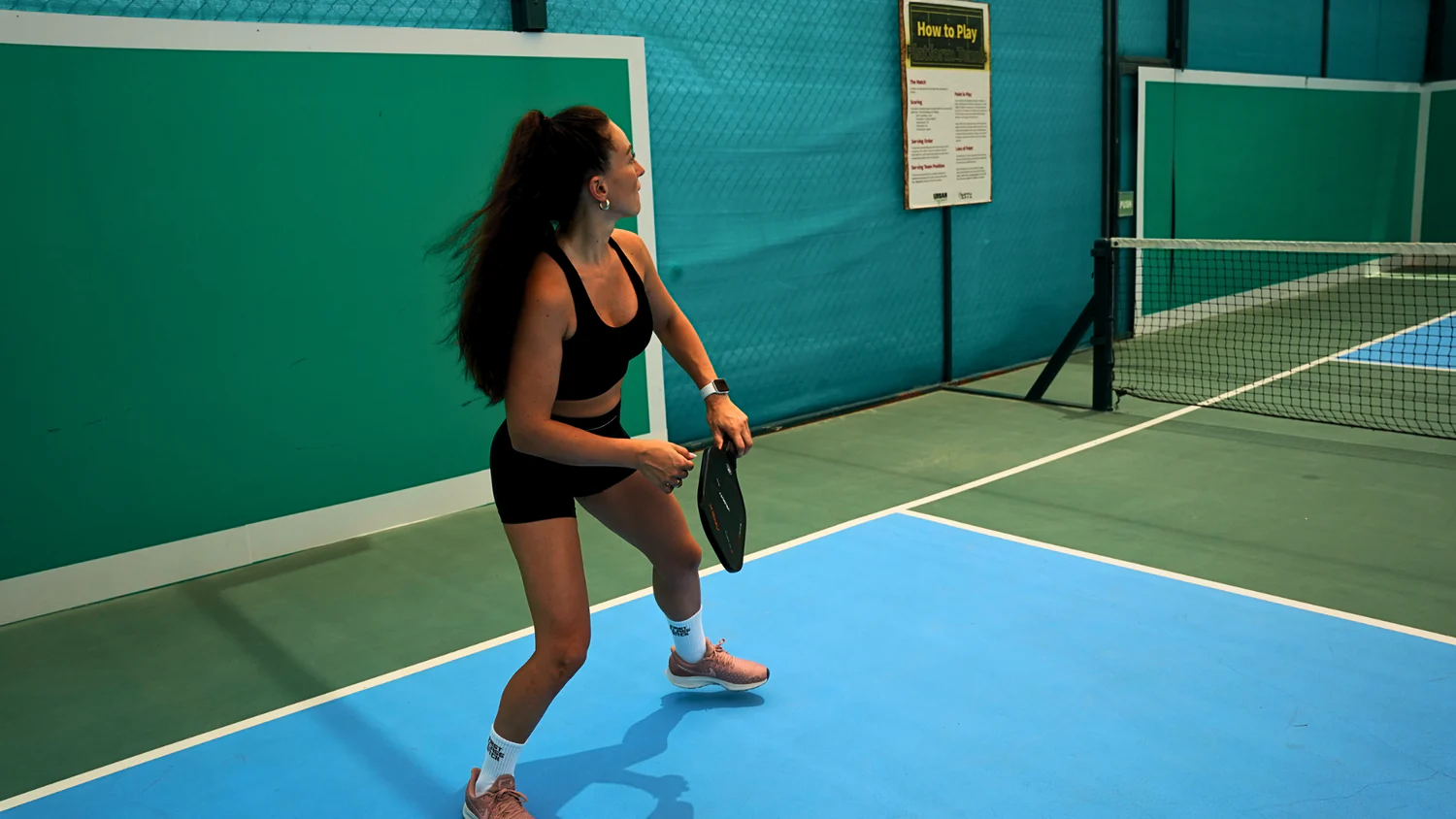
Serve strategy
Your serve in pickleball singles is more than a prelude; it’s a statement. A well-placed serve can set the tone for the entire rally, putting your opponent on the back foot right from the get-go. Therefore, your serve needs to be accurate, strategic, and varied.
Experiment with different serves, such as targeting the opponent’s backhand or applying spins to add complexity. Serving to the weaker side of your opponent can yield quick points, akin to striking where the armor is thinnest.
Return of serve strategy
Returning a serve effectively can turn the tide of the game. The goal here is to nullify your opponent’s advantage by hitting a deep return, ideally to their weaker side. This buys you precious time to advance to the kitchen line and seize a strategic position.
Key Tips for Return of Serve:
- Aim for depth over power.
- Use strategic court positioning.
- Add spins to complicate your opponent’s return.
Positioning strategy
In singles, every step matters. Proper positioning allows you to cover the court efficiently, react to shots quickly, and maintain control of the rally. Place yourself strategically along the centerline and anticipate where the ball might go.
Be vigilant about your opponent’s positioning as well. If they lean to one side, exploit the exposed area. This doesn’t just win you points it keeps your opponent scrambling, mentally and physically taxing them.
Shot selection
Shot selection in singles is a labyrinth of choices. Broadly, it’s about outwitting your opponent, keeping them guessing. Mix offensive and defensive shots, targeting their weak spots and forcing them into errors. The third shot drop is a brilliant tool in singles, helping you regain control of the rally and advance to the net effectively.
Additional rules
Line calls
Line calls in pickleball are about precision and honesty. A ball contacting any line is considered “in,” except the non-volley zone line on a serve, which is a fault. Players must call the lines fairly and accurately, as poor sportsmanship can tarnish the integrity of the game.
Dead balls
If a rule is violated or a fault occurs during play, the ball is declared dead, and the rally ends. Specific actions like hitting the ball into the net, volleying within the kitchen, or stepping on the non-volley zone line during a serve constitute faults resulting in dead balls. Each dead ball reasserts the importance of abiding by the rules to maintain the flow and fairness of the game.
Safety rules
Safety is paramount in pickleball. Proper court positioning, adherence to the non-volley zone rules, and fair line calls are essential. These rules not only ensure a fair game but also prevent injuries that might arise from aggressive or reckless play.
Common questions
Is pickleball singles more challenging than doubles?
Engaging in pickleball singles can indeed be more physically and mentally demanding than doubles. In singles, there’s no partner to rely on; every point, every move falls entirely on your shoulders. This makes for a more grueling, but equally rewarding, experience that tests your stamina, agility, and strategic thinking.
What is a “lob” in pickleball, and how can I use it effectively in singles?
A lob in pickleball is a high, arching shot designed to send the ball over the opponent’s head, pushing them backward. In singles, an effective lob can be a strategic maneuver to exploit an opponent’s positioning, forcing them out of the kitchen area and opening up the court for decisive follow-up shots.
What are some tips for staying focused and motivated during a pickleball singles match?
Mental toughness is crucial in singles. Stay focused by keeping your eyes on the ball and your mind in the moment. Break the match down into smaller, manageable segments, focusing on winning one point at a time rather than the entire game. Visualization techniques and self-affirmation can also help keep your mental game sharp.
How does the strategy of pickleball singles differ from the strategy of doubles?
The shift from doubles to singles changes the game’s dynamic markedly. While doubles emphasize teamwork and communication, singles place a heavy premium on individual skill and strategy. In singles, you’ll need to cover more ground, think several shots ahead, and exploit every weakness your opponent shows.
Conclusion
Pickleball singles offers a unique and exciting challenge for players, testing their skills and strategy in a one-on-one format. By understanding the specific pickleball singles rules and developing effective tactics, you can master this dynamic and rewarding format of pickleball. The emphasis on individual skill, mental toughness, and strategic shot selection makes every match a riveting experience.
Find a pickleball court and challenge yourself to a singles match! Embrace the one-on-one competition, develop your skills, and enjoy the thrill of a singles game. Whether you’re a novice or a seasoned player, there’s always room to grow and new strategies to explore. So grab your paddle and dive into the world of pickleball singles. You might just find it to be one of the most exhilarating sports you’ve ever played.
